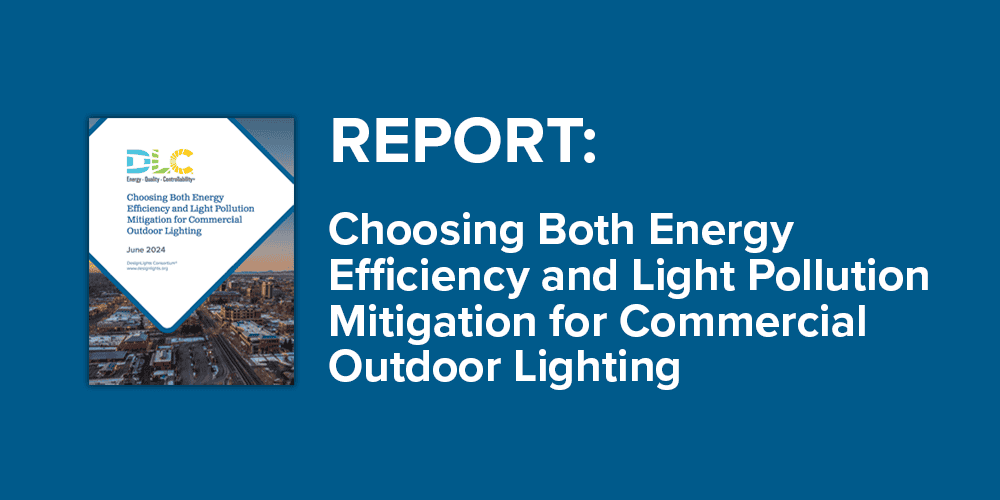
New research makes a case for utilities to incentivize outdoor luminaires and NLCs that mitigate light pollution and meet the DLC’s efficiency and quality thresholds.
MEDFORD, MA – Study results released today by the DesignLights Consortium (DLC) strengthen the case for utilities and other energy efficiency programs to incentivize exterior lighting products that satisfy the DLC’s LUNA Technical Requirements.
LUNA-qualified products are designed to reduce both light pollution and energy usage. With proper design and controls programming, they have the potential to save more energy than outdoor LED installations focused on energy efficiency alone, the study found.
“This research looked at energy use and costs and ROI for lighting retrofit solutions that are energy efficient and minimize light pollution, compared with projects aimed at energy efficiency alone,” DLC Executive Director and CEO Tina Halfpenny said. “While savings varied from scenario to scenario, the overall results support incentives for LUNA products as a way to encourage lighting projects that reduce energy use, save customers money, and mitigate the impacts of light pollution. The added value to energy savings is a win-win for customers and the environment.”
In addition to meeting independently vetted criteria for mitigating aspects of light pollution such as sky glow and light trespass, the luminaires on the LUNA Qualified Products List (QPL) meet all the DLC’s Solid State Lighting V5.1 thresholds for efficacy, quality, controllability, and reliability of commercial LEDs.
Conducted with VH Lighting Services and Lighting Research Solutions, the study, “Choosing both Energy Efficiency and Light Pollution Mitigation for Commercial Outdoor Lighting”, investigated realistic outdoor lighting retrofit solutions using a model high school parking lot and a main street in Fort Collins, Colorado as examples. In both cases, researchers found the use of LUNA-eligible products reduced light pollution. The high school scenario also demonstrated that LUNA products facilitate lower energy use and greater cost savings compared to retrofits focused on energy efficiency alone. Power demand findings varied for the main street scenarios, depending on product type.
The study found that, while realized energy savings would clearly favor the use of LUNA products in many of the application scenarios, incentives will improve the ROI and community benefits for municipal lighting decision makers. Pairing LUNA products with networked lighting controls proved beneficial in terms of both energy usage and light pollution reduction. Higher incentives from utilities and energy efficiency programs for NLCs and LUNA products would improve the ROI of these installations, thereby encouraging more retrofits that achieve the twin goals of saving energy and reducing light pollution.
“Many factors influence the light pollution performance of an outdoor retrofit LED lighting system,” stated the study’s authors. “Each of these requires careful consideration in the design and application of an outdoor LED retrofit system, as they will impact system performance, payback period, and ROI.”
To learn more, read the study and attend the webinar at 1:00 PM EST on July 10, 2024.
About the DesignLights Consortium: As an independent non-profit organization, the DesignLights Consortium provides decision makers with data and resources on quality lighting, controls and integrated building systems to reduce energy use, carbon emissions and light pollution. We envision a net zero future where lighting, controls and integrated building systems enable energy savings, decarbonization and sustainability for all people and the environment.
© 2025 DesignLights Consortium. The DesignLights Consortium is a project of Efficiency Forward, Inc., a non-profit 501(c)3 organization. Privacy Policy Terms of Use